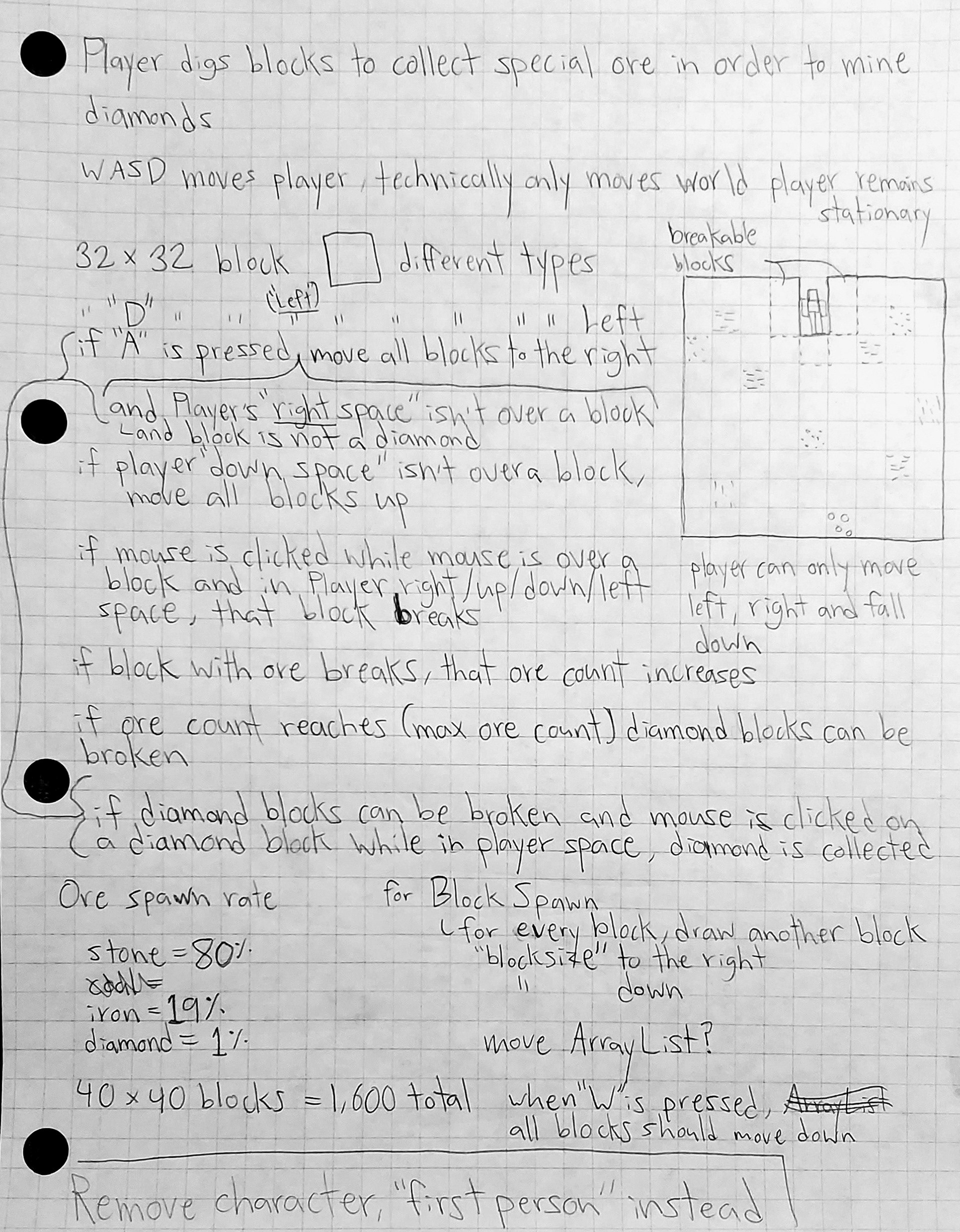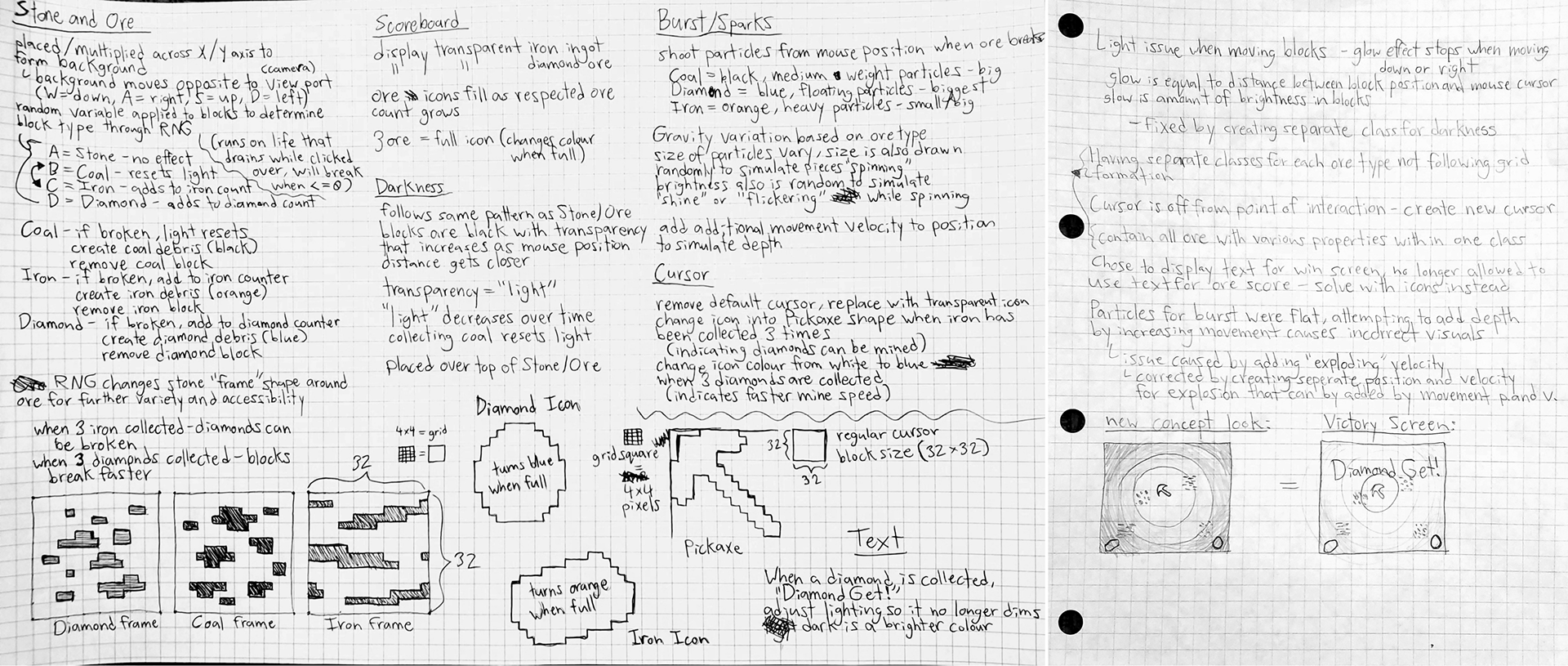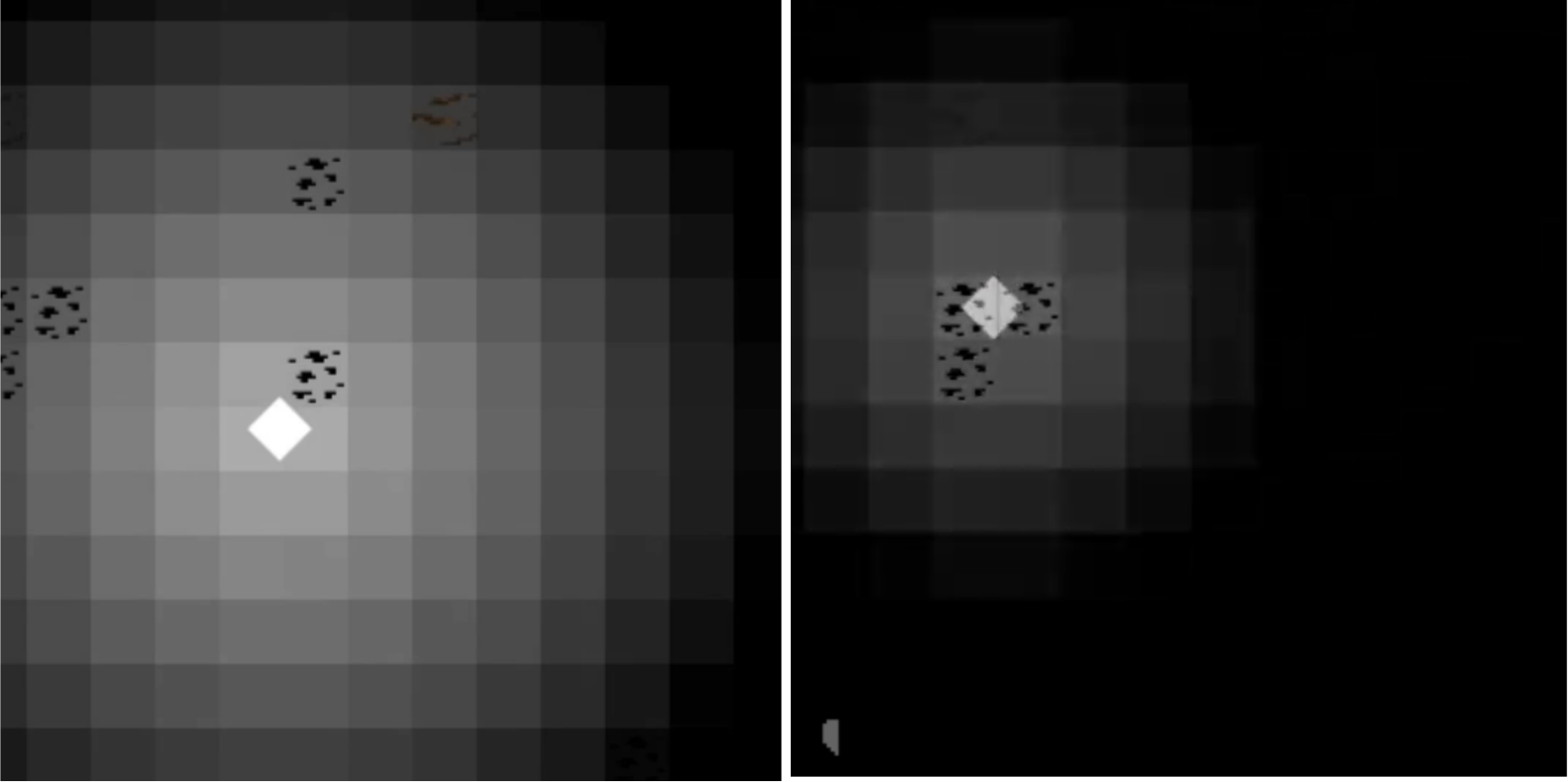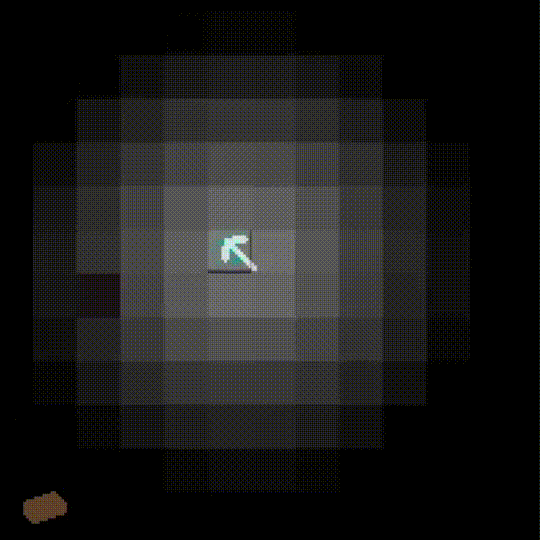Refurbished - Card Game
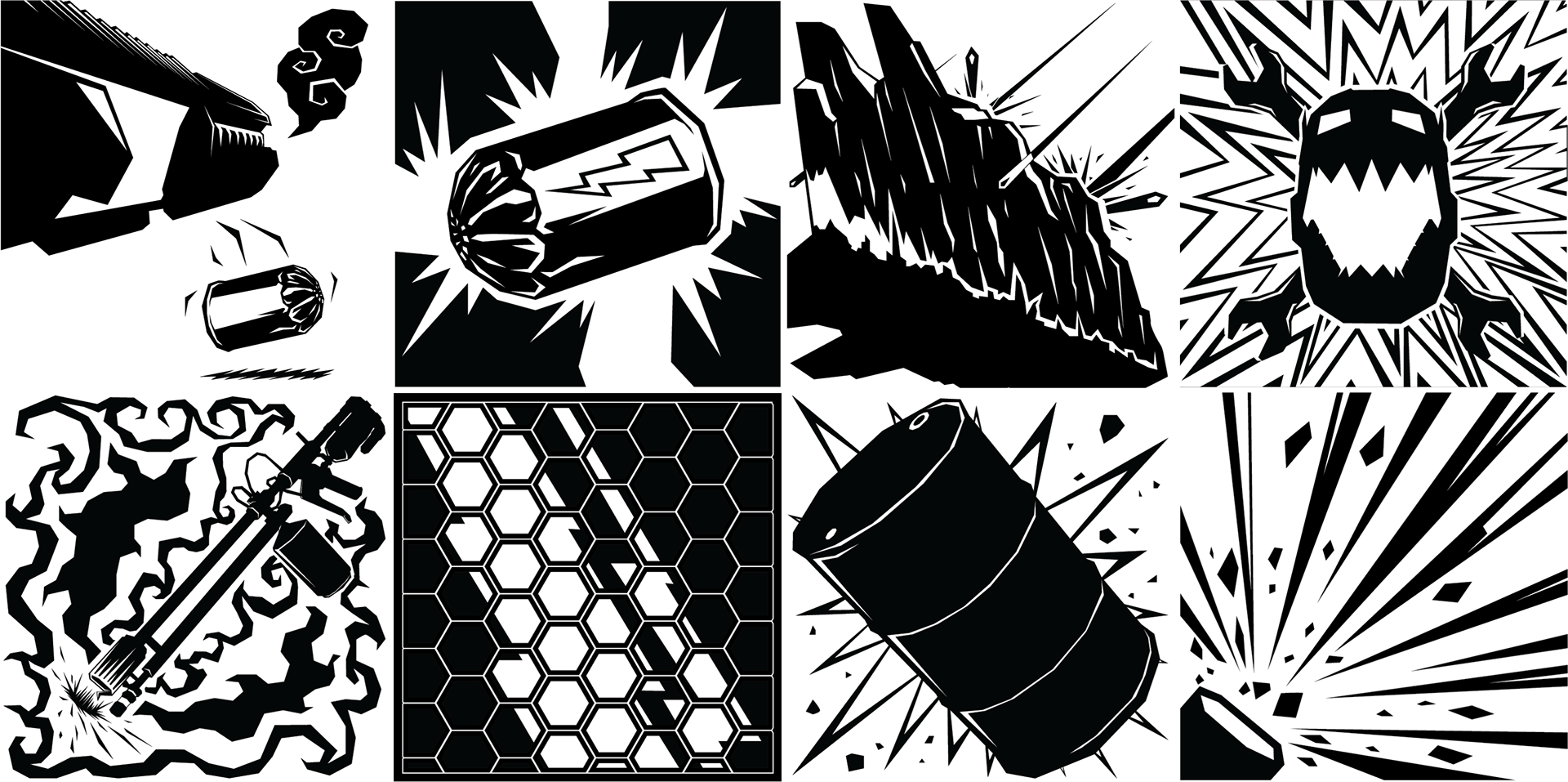
Design a card game with modular mechanics
Our team's focus was on developing systems that could allow for dynamic uses of player abilities, rather than having only one solution to a given problem. Our initial premise involved the construction of robots using various parts, which evolved into a 3-Player combative experience using different attacks and upgrades.
Players are given a deck of abilities and a mat to track their health, discard abilities, and target their opponents. Players pick who to target based on where they place their ability cards, filling the other target with a "Blank Shot" to conceal their pick until the combat phase. Each ability is revealed, addressed, and discarded until it returns to the player's hand a few turns later.
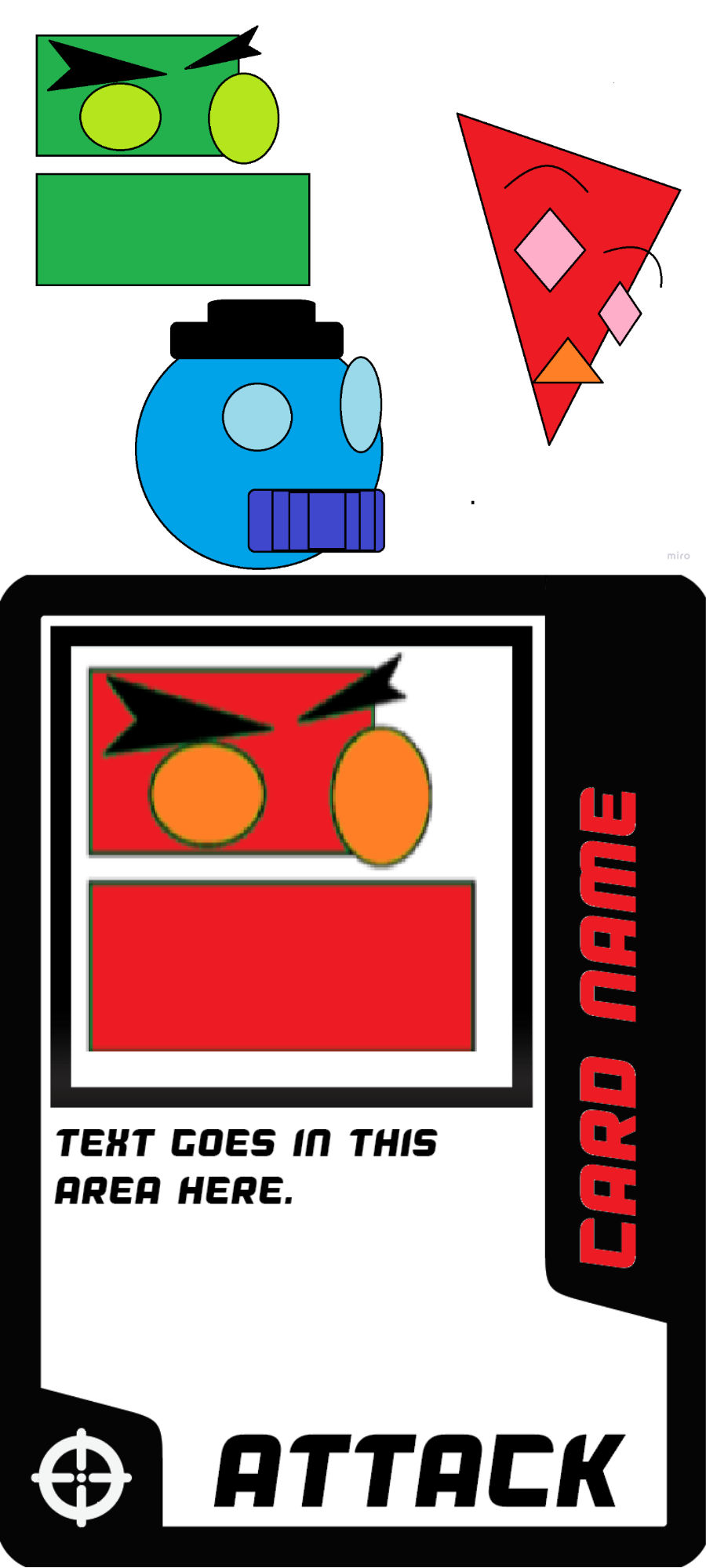
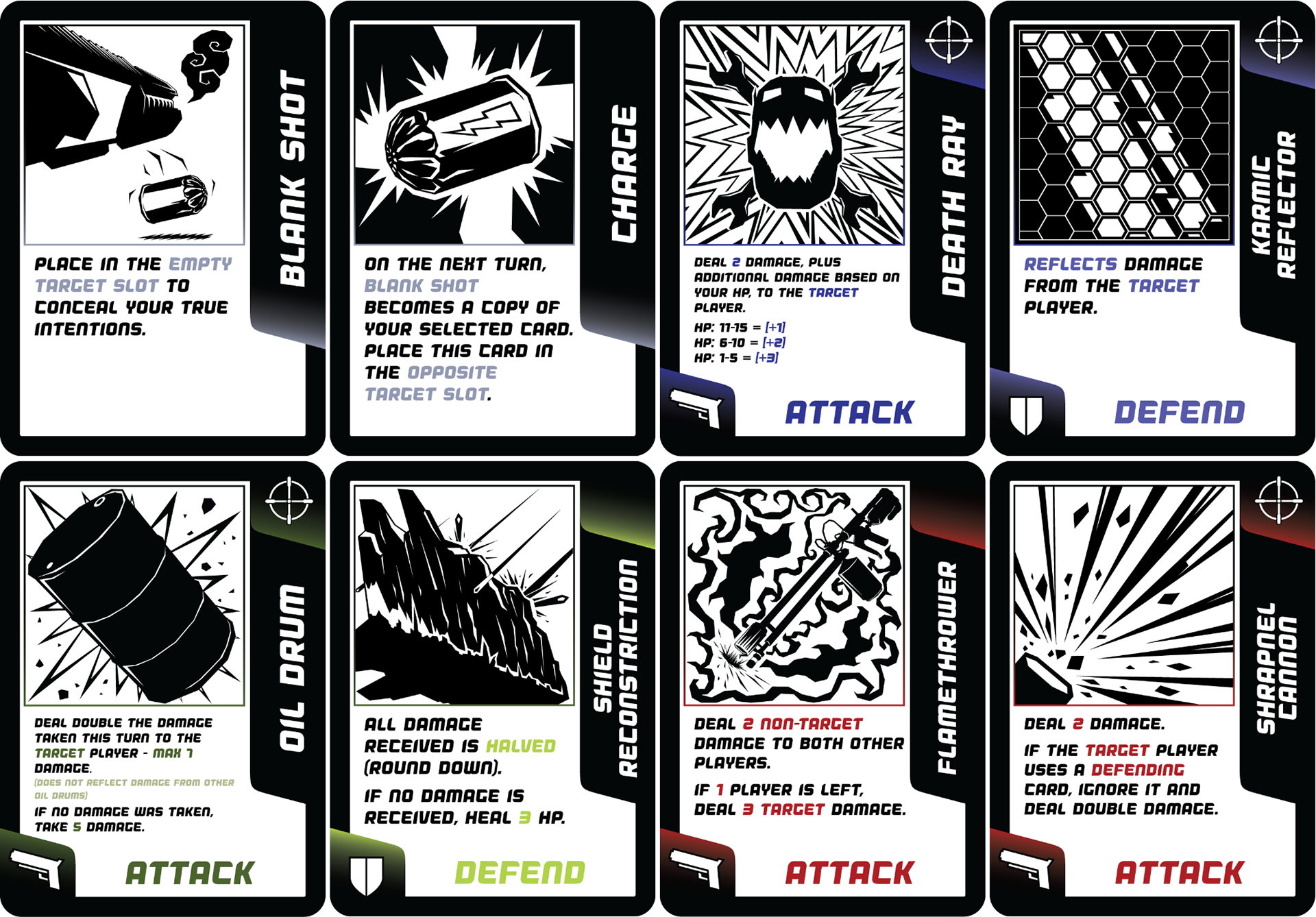
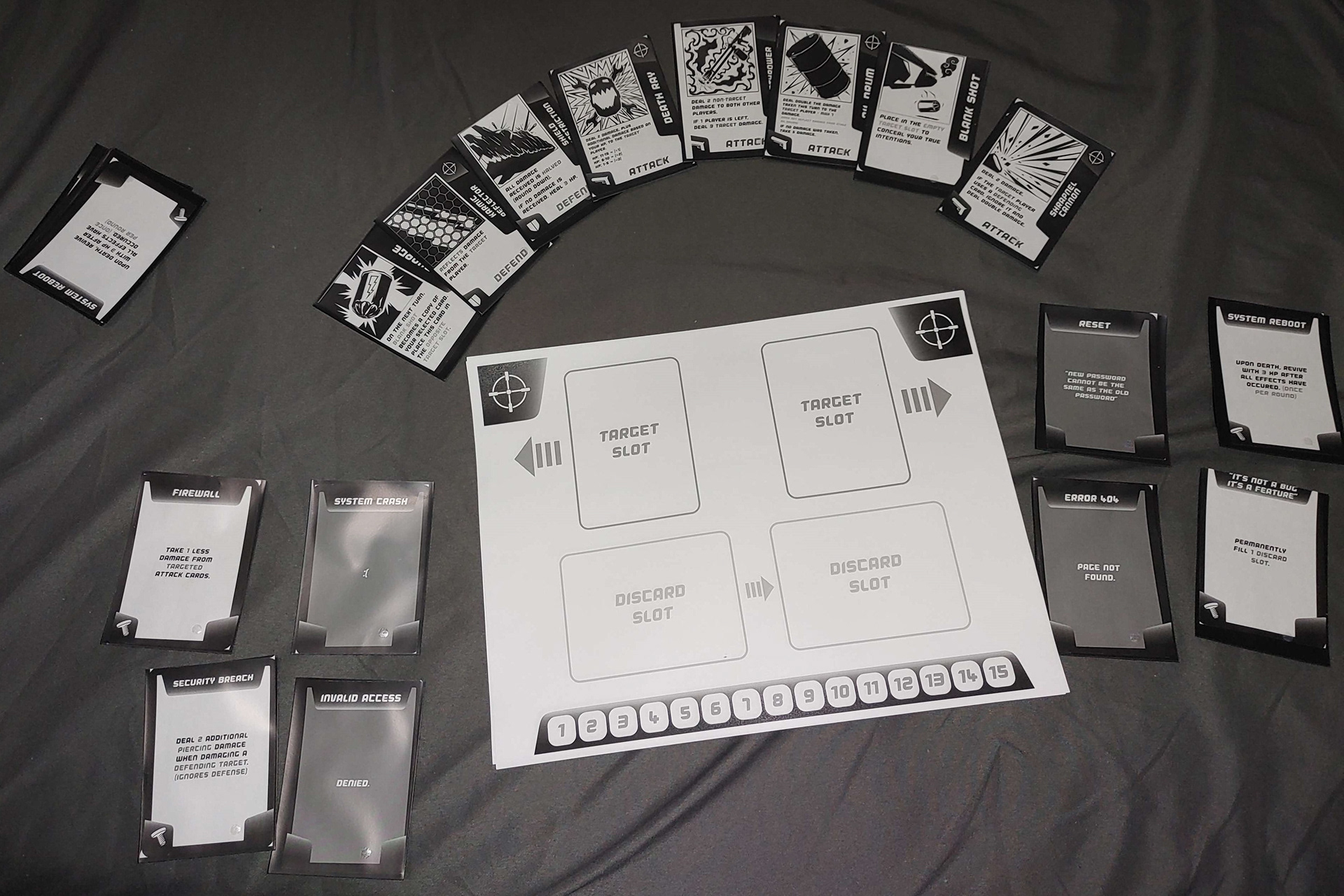

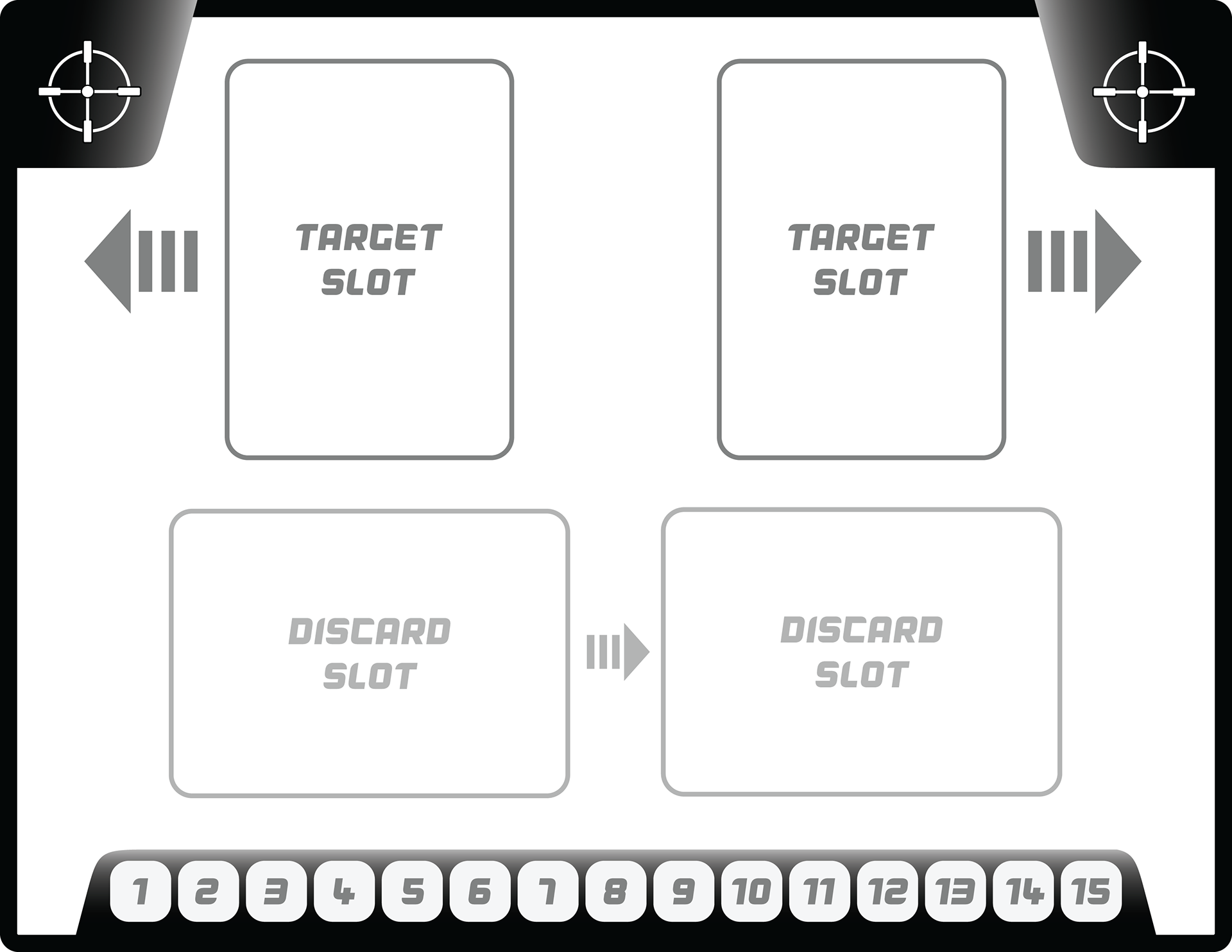
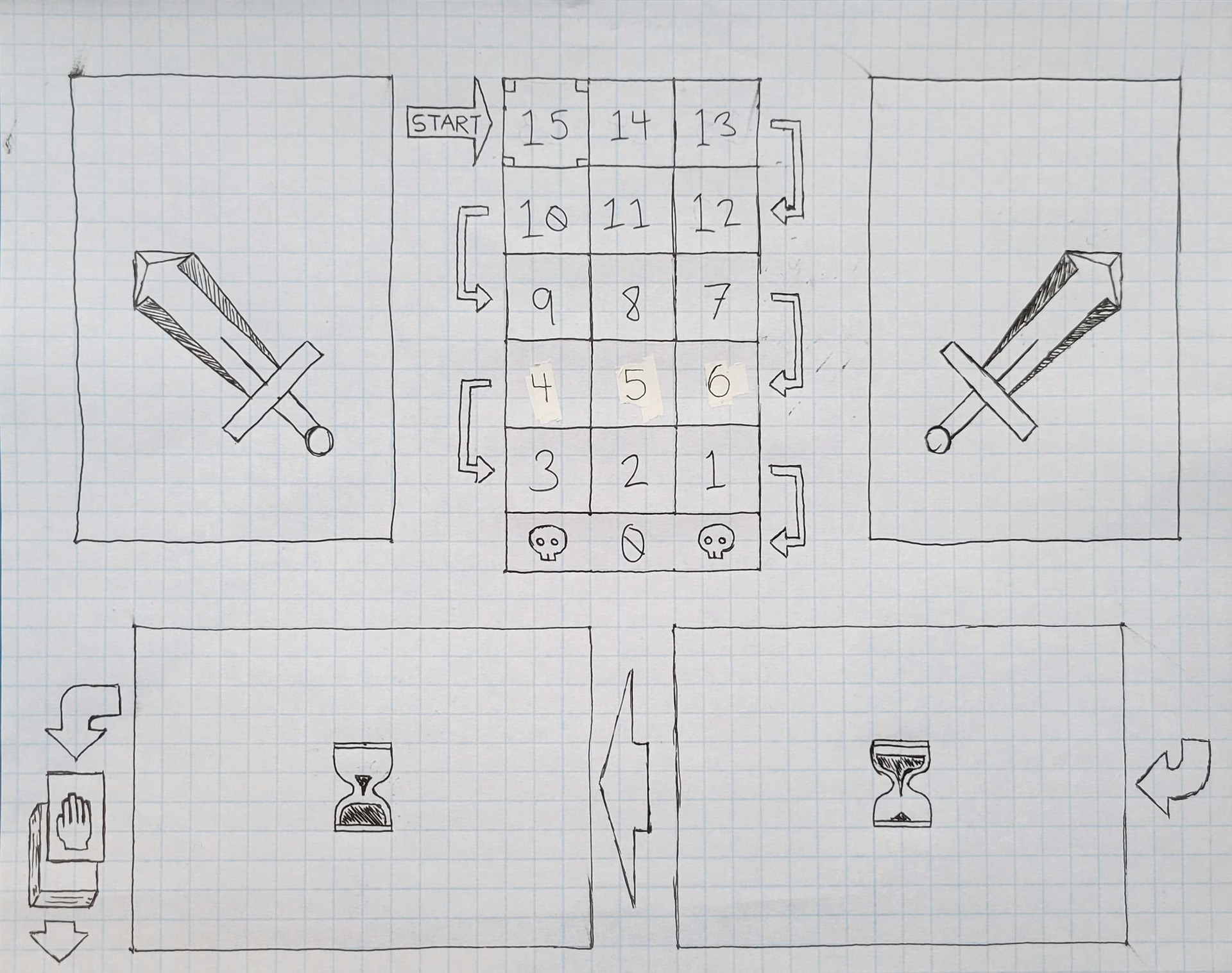
A round ends when there's one player standing, at which point players will shuffle and pick from three upgrade cards, starting with the player who lost first, then second, then the winner, allowing players who struggled the most to get better pickings for the next round. The first player to win two rounds wins the game.
I worked with my team to create rough drafts for the player mat, final designs for ability icons, and aid in conceptualizing and developing each ability and how the mechanics balance between players and upgrades. It was important to ensure that no ability had a single determined outcome, but would instead act as a piece to the greater outcome based on where and how each player uses them. It was also just as important for us to remove as much randomness to each outcome as possible, as was discovered during early playtests, which was fixed by making careful adjustments to each player ability while also displaying their health and discarded piles, allowing their opponents to make more informed decisions.
Miro, Adobe Illustrator, Microsoft Excel
Modular Design, Concept Art, Final Art, Playtesting
Modular Design, Concept Art, Final Art, Playtesting
Diamond Mine - Playable Program
Create a game using Processing
An early project while studying programming. The project simply needed to function, and with time allowing, I wanted to tweak the aspects of a small game in order to make it more enjoyable.
As a pseudo-minecraft simulator, the game involves using WASD to navigate around a procedurally generated cave wall using the mouse to illuminate and mine ore before they run out of light. Mine coal to restore the light, mine iron to create a pickaxe, mine diamond with a pickaxe to win the game.
The initial premise involved controlling a character that would dig through each block to traverse, like a 2D approach to core Minecraft mechanics. The difficulty to reproduce this within the given timeframe shifted my approach to a point-and-click approach. With the extra time, I leaned into the designs created by the Minecraft team - specifically their iconic pickaxe, and their recent at the time colourblind-friendly ore redesigns. This was important as the game window itself had to meet a specific size, which would appear fairly small during play. In order to make the player view wide enough to navigate the world, with ore spread out far enough for a challenge, it was important that each ore was distinct enough to be recognized even at a small scale. As visual feedback, ore would shake while being mined and would effect the UI in some way when collected.
Adding to the visual accessibility, as well as game feel and positive feedback, I added visual effects such as shines over iron and diamond, particle effects from broken ore that shimmer brighter the more valuable the ore, and a dynamic shadow to play around with after winning the game. Additionally, once players beat the game, their light stays illuminated permanently, allowing for post game ease to collect the remaining ore, even unlocking a diamond pickaxe after mining three diamonds ore which speeds up the time it takes to mine.
Processing
Programming, Game Design, Art
